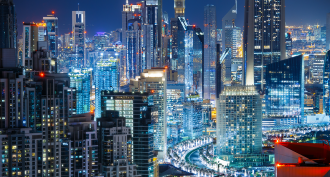Environment
-
 Chemistry
Chemistry‘Thirdhand’ smoke can hitchhike to non-smoking sites
Harmful “thirdhand” smoke — the type that attaches to surfaces — can hitch a ride on airborne particles or clothes and travel into non-smoking buildings.
-
 Environment
EnvironmentScientist tackles water pollution with epic swims
German chemist Andreas Fath swam the entire Tennessee River — in record time. The reason was not to win a place in the Guinness Book of Records. He wanted to raise awareness about water pollution.
-
 Genetics
GeneticsExplainer: DNA hunters
Snippets of DNA can be left behind by a passing organism. Some researchers now act as wildlife detectives to identify the sources of such cast-off DNA.
-
 Climate
ClimateClimate change threatens future Winter Olympics
Higher temperatures, less snow mean many former Winter Olympics sites soon will no longer qualify to host future games, concludes a new analysis.
-
 Ecosystems
EcosystemsScientists Say: Bog
Bogs are a type of wetland in which partially decayed plants sink down and form peat.
-
 Environment
EnvironmentTropics may now emit more carbon dioxide than they absorb
Analyses of satellite images suggest that degraded forests now release more carbon than they store.
-
 Environment
EnvironmentNight lights have a dark side
Artificial light at night not only affects our view of the night sky, but also has the ability to impair animal behaviors — and probably our health.
-
 Health & Medicine
Health & MedicineHunting the mysterious source of a global illness
Doctors and scientists around the world are scouring the environment for the elusive cause of Kawasaki disease, a harmful childhood illness.
-
 Health & Medicine
Health & MedicineIs your home chilly? This might just be healthy
Feeling mildly cold (or a bit too warm) forces the body to adjust what it’s doing to maintain a healthy temperature. And that can do a body good, data now show.
-
 Tech
TechMaybe ‘shade balls’ should not be balls
So-called shade balls have a range of uses in water reservoirs, from cutting evaporation to reducing the growth of algae. But the best performers might not actually be balls, a Florida teen now shows.
By Sid Perkins -
 Environment
EnvironmentCleaning up water that bees like to drink
Plant roots suck up pesticides used on soils, then release them into water that can seep from their leaves. This is a sweetened water that bees love to sip. A teen figured out how to remove most of the pesticide with bits of charcoal.
-
 Environment
EnvironmentOcean of the future may make shrimp small and colorful
Carbon dioxide released into the air can end up in the ocean, making it more acidic. A teen showed that this acidification could shrink shrimp and make them more colorful.